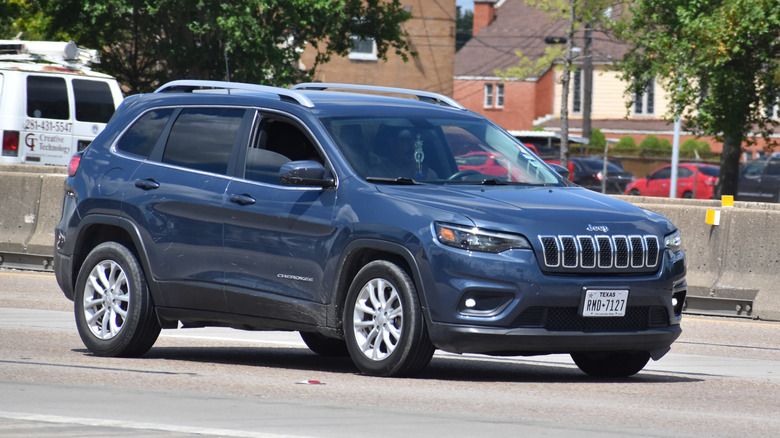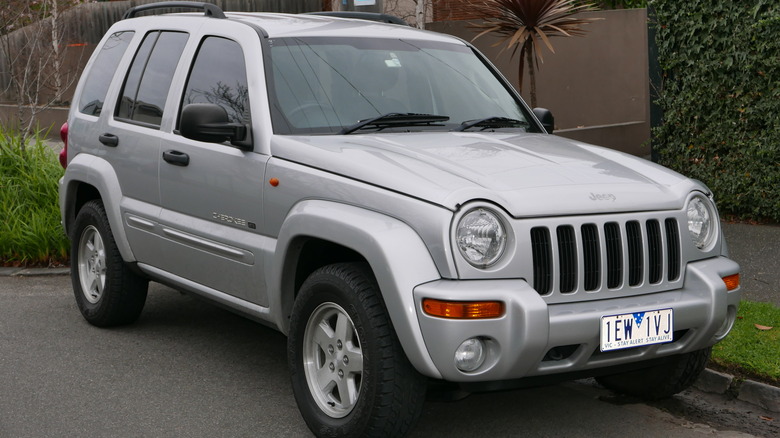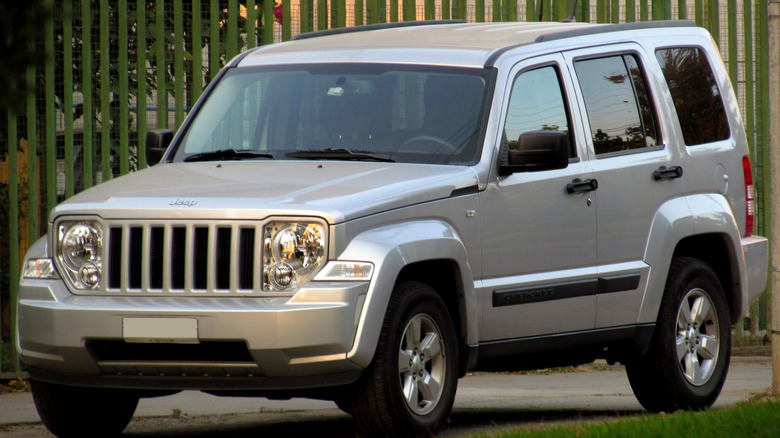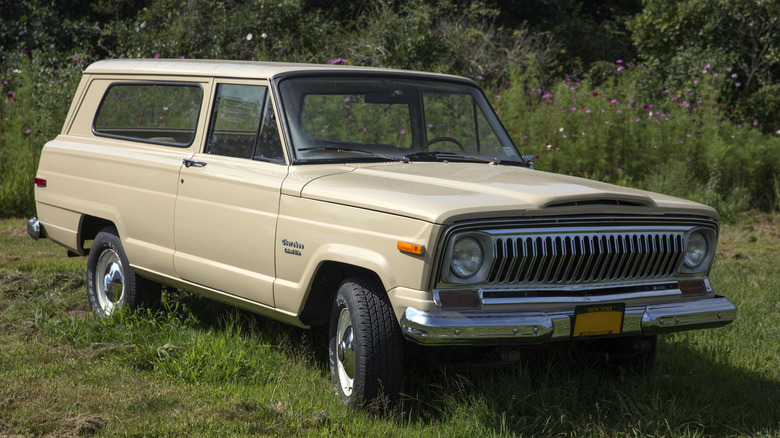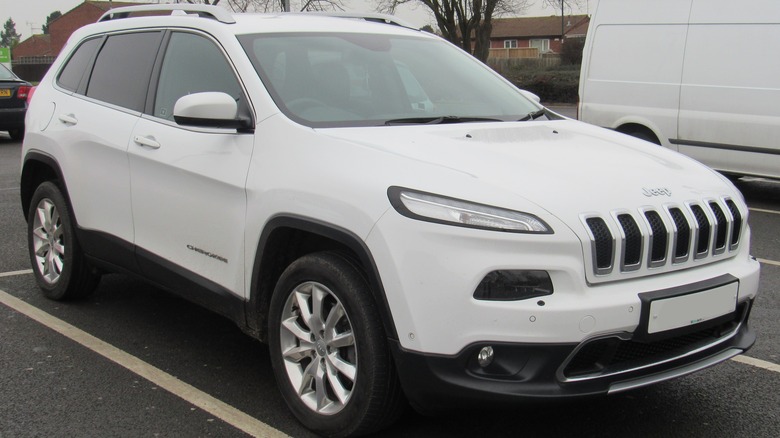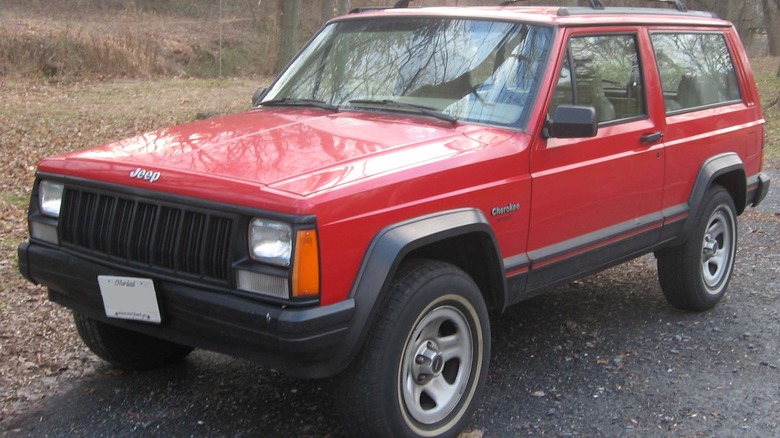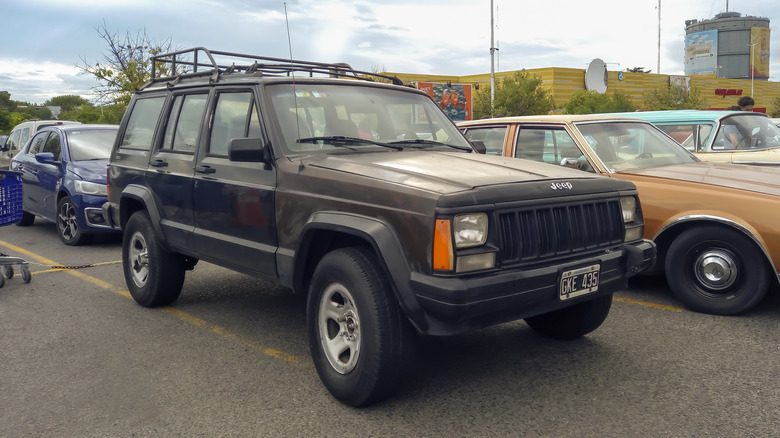Every Generation Jeep Cherokee, Ranked Worst To Best
Jeeps have been around since World War II, when Willys Overland built the Quad for the U.S. Army. The Quad grew into the CJ series, which eventually became the Wrangler when Chrysler bought the brand from AMC in 1987. The Wrangler is now in its fourth generation, and we ranked each of the four Wranglers recently based on reliability, features, and performance. Jeep also produced a range of enclosed SUVs in its history, like the Cherokee. That model debuted in 1974 and is now in its fifth generation.
The Cherokee has seen two changes in custody of the Jeep brand. It passed from AMC to Chrysler in 1987, and came under the Stellantis umbrella when Fiat Chrysler and the Peugeot group combined forces a few years ago. The Cherokee badge has always existed separate from the Grand Cherokee, which joined the plug-in hybrid ranks in 2022.
We're going to focus on the standard Cherokee for the moment, and rank each of its five generations from least to most desirable, using the same benchmarks we used for the Wrangler.
5. Third generation (KJ), 2002 – 2013
The worst Cherokee wasn't even known by that name in the United States. The third generation model, which appeared in 2002 with the KJ designation, was badged as the Liberty in its home market. It was smaller than previous versions but inherited its unibody construction from the second-generation XJ. The KJ was the first Jeep model to get the brand's new PowerTech engines, which don't have the greatest reputation for reliability or longevity. The 3.8 liter V6 is known to gulp oil and develop exhaust manifold cracks, and the 2.4 liter I4 was dropped in 2006.
KJs were also prone to failures involving power window regulators and door lock actuators. The NHTSA logged more than 7,400 complaints for the Liberty, an average of more than 1,300 per model year. It also issued 65 separate recalls, including 14 for the 2002 model alone. Among those were warnings that the airbags could deploy inadvertently, and another that a fire could result from a rear-end crash.
4. Fourth Generation (KK), 2008-2014
The next least desirable Cherokee was the fourth-generation KK, which also wore the Liberty badge in North America. It appeared in 2008 and was a boxier version of its predecessor, with squared-off headlights replacing the KJ's round ones and a sharper overall profile. The troublesome PowerTech V6 was carried over, but the KK saw a few improvements over the KJ. Standard equipment included stability control with rollover prevention, traction control, and ABS. For the first time, Cherokee buyers could get Chrysler's Mygig touchscreen infotainment system, which included GPS navigation along with Sirius satellite and Bluetooth connectivity.
Complaints to the NHTSA and recalls were far less frequent for the KK in comparison to the KJ. Owners logged an average of about 250 complaints per model year, and the most recalls for any one year were the three issued for the 2011 model's active head restraints.
3. First Generation (SJ) 1974-1983
To build the first-generation SJ Cherokee, AMC more or less eliminated the Wagoneer's C-pillar and rear doors, and extended the side glass in the rear cargo area. For its first two years, the only engine options in the Cherokee were a 258 cubic inch I6 and the stalwart 360 cubic inch V8. A 401 cubic inch option was added in 1976, and the following year, Cherokee buyers could also drive home a four-door model. Choosing the Chief trim from 1976 on gave buyers a wider track and wider fenders to fit oversized tires. A Golden Eagle Cherokee was issued in 1979, and a Golden Hawk edition in 1980.
They both included large bird decals on the hood, but the Golden Eagle also had the Chief's wider axles plus denim upholstery. Through 1979, the full-time Quadra-Trac four-wheel drive system with a Borg-Warner 1339 limited-slip transfer case was an option. In 1980, the 1339 was swapped out for a New Process 207 case, but the Quadra-Trac name and badge remained. The front and rear driveshafts could be locked with a vacuum switch in the cabin, but many owners have installed kits to convert Quadra-Trac Cherokees to part-time four-wheel drive. The gas-guzzling SJ didn't last long enough to see fuel injection, although aftermarket kits are available from the likes of Holley and Howell to remedy this.
2. Fifth Generation (KL) 2014-present
The latest Cherokee, the KL, has collected a few industry awards since its debut in 2014. MotorTrend named the Cherokee Trailhawk its 2015 Four Wheeler of the Year, and MotorWeek lauded the Cherokee as its best small SUV of 2014. Still, Fiat Chrysler reported selling only about 11,000 Cherokees in the first quarter of 2022, compared to more than 75,000 Grand Cherokees and over 45,000 Wranglers. Jeep dropped the model in 2023, but poor sales may not have been the only reason. In 2021, Cherokee Nation principal chief Chuck Hoskin, Jr. asked Jeep to stop using the indigenous tribe's name. Stellantis CEO Carlos Tavares told the Wall Street Journal he would keep that dialogue open. "We are ready to go to any point, up to the point where we decide with the appropriate people."
Cultural appropriation with respect to its badge was not the only problem with the newest Cherokee, however. KL models have been the subject of numerous NHTSA recalls, including one for 2019 and 2020 models where the steering rack could fail, leading to a crash. Other potentially dangerous flaws included faulty airbag sensors and inflators, loose seat belt bolts, and a problem with the adaptive cruise control that could lead to unintended acceleration. Recalls were also issued for faulty axle shafts, missing valve retainers, improperly installed camshafts, and defective oil pumps.
1. Second generation (XJ) 1984-2001
The second-generation XJ Cherokee has earned legendary status since its release for the 1984 model year. The XJ was partially responsible for dealing a death blow to the station wagon and turning American buyers to SUVs. It was initially offered in North America with either Jeep's bulletproof 2.5-liter four-cylinder engine or a 2.8-liter V6, although buyers from 1988 on could get the absolutely unkillable 4.0-liter straight six. European buyers could get the XJ Cherokee with a Renault 2.1 Turbodiesel inline four through 1996, when a more powerful 2.5-liter version took its place.
Jeep built almost 2.9 million XJ Cherokees, and Tyler Duffy of Gear Patrol gave it the nod over the Wrangler as Jeep's "most influential vehicle." Transmissions ranged from the tough-as-nails Aisin-Warner AW-4 automatic and AX-15 five speed manual on down to the "if you see it, swap it" Peugeot BA-10. 1987 and later XJs got New Process 231 or 242 transfer cases. Both of these units were installed in different Jeep models and enjoy plentiful supplies of rebuild kits, salvage yard replacements, and aftermarket upgrades. XJ Cherokees are known for their staying power, and will run well past the 200,000-mile mark, short of a crash. Its longevity and historical significance makes the XJ Cherokee clearly the best of the bunch.
Methodology
To rank each generation of Jeep Cherokee, we consulted previous reports on SlashGear and other reputable outlets, then dove deeply into NHTSA logs of recalls and customer complaints for each year of the five separate generations.
Credit was given for durable drivetrain components and customer satisfaction, and significant demerits were given where safety issues were common. Although newer generations have modern features that make them more convenient and comfortable to operate, their lack of reliability and dangerous mechanical defects prevented us from ranking them higher.
